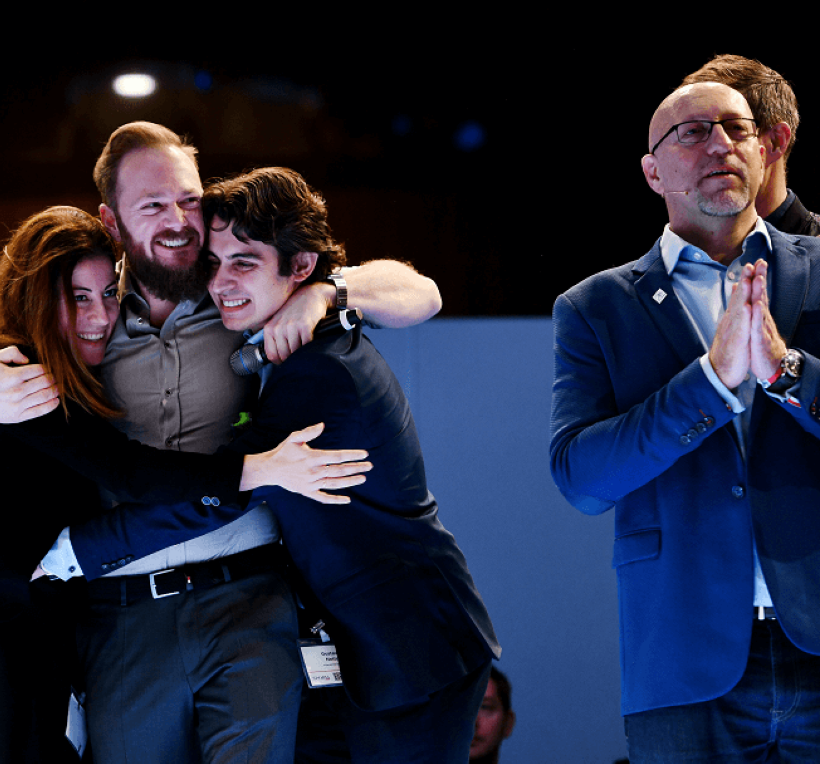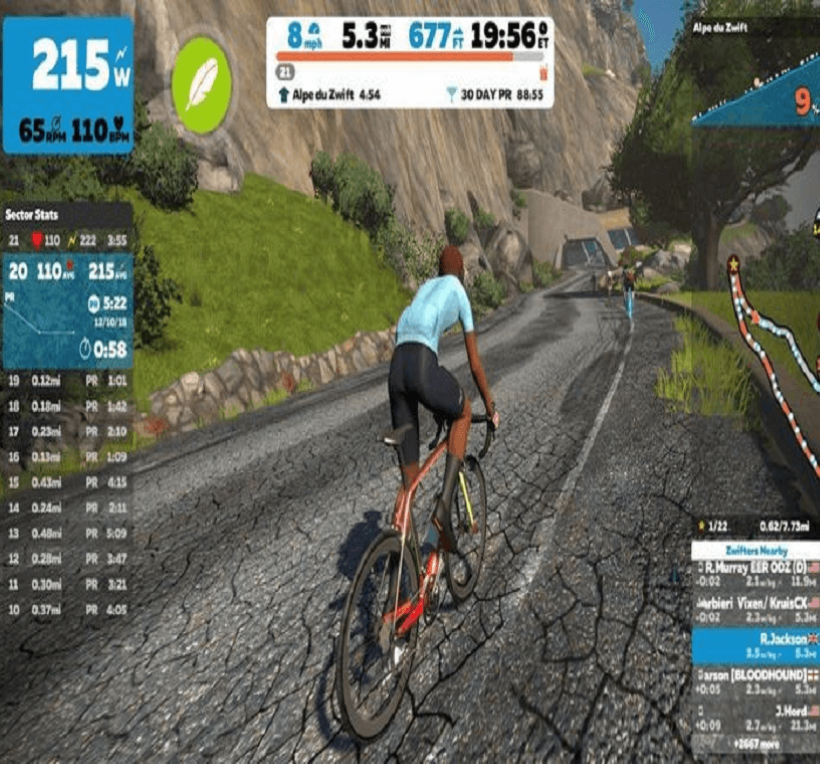

Mastering Client Conversions: The Key to Securing and Retaining Top Clients
Est 2 Min Read
Mastering Client Conversions: The Key to Securing and Retaining Top Clients
As Head of Global Projects, I’ve facilitated & managed hundreds of high-stakes deals between groundbreaking startups and top-tier sports brands, broadcasters, and federations. Over the years, I’ve seen both successes and missed opportunities, but recently, the shift has been undeniable. Startups that master the art of clear communication, tailored demonstrations, and strategic entry points are converting more effectively than ever before. One key lesson stands out: having an innovative product just isn’t enough. The real game-changer is how well you communicate its value and build lasting relationships.
Too often, startups focus solely on their product, assuming its brilliance will speak for itself. But success comes from understanding what truly motivates high-value clients to engage, commit, and invest. In this article, I share battle-tested strategies from 100+ client conversations to help you turn top prospects into long-term partners. If you want 2025 to be your breakthrough year, it’s time to go beyond the product pitch and start unlocking real business impact. Let’s dive in.
Key Insights for Successful Client Conversions

1. A Prepared Mindset: Customer Experience and Personal Connection
According to Zendesk, three out of four customers are willing to spend more with businesses that provide a good CX, highlighting the financial benefits of prioritizing customer satisfaction, and this begins before your first call. Ensure your client comes prepared, and has all the information needed, for their initial call. Thinking 10 steps ahead of their experiences and establishing a personal connection with the representative makes you significantly more likely to move forward on a positive note. Building rapport and showing genuine interest in your client’s business goals shows trust and encourages collaboration.
This week I met with a German professional football club that competes in the Bundesliga. They had a phenomenal run last season and are doing exceptionally well this season as well. They were about to meet a couple of our startups that were of interest to solve some of their needs. Instead of jumping straight into business, small talk – like commenting on the weather or their recent matches – set a positive tone and created a comfortable atmosphere for both sides. They went on to select two startups and are now working together to improve their processes.
2. Product Demonstration: Research & Relevancy
Businesses that provide a clear demonstration of their solution tailored to the client’s specific needs see higher success rates. I see it go under the radar many times, but clients really do appreciate when the proposition is customized to their unique requirements and demonstrates a thorough understanding of their ecosystem: stakeholders and target audience.
Whether your solution operates on web, tablet, or mobile, a quick screen share can be a game-changer. Showcasing how the product can integrate seamlessly into your client’s operations allows decision-makers to envision its potential. At the beginning of this month, I met with one of Europe’s biggest broadcasters as they wanted to amplify their viewers’ experience and engage their audience better. Instead of the default powerpoint, one company did a live demo with the broadcaster’s branding, simulating what the actual product will look like and got his whole team to mimic an audience. Needless to say this blew the lid off and they were the only one, out of four, that are now moving forward to be a vendor for the broadcaster, you’ll probably experience their tech soon if based in Europe. Customizing your proposal to align with your client’s pain points and target market further strengthens engagement.
3. Show The Money: Clear Financial Incentive (ROI)
A compelling financial incentive structure is critical. Your clients need to understand the potential return on investment (ROI) and how the partnership benefits them financially. Typically, you want to give your clients a win-win scenario, not a sunken investment scenario. Quantifying the value with simple, digestible numbers makes an impact. This week I facilitated an interesting call with a Portuguese professional football club, whose senior team currently plays in the Primeira Liga, the top tier of Portuguese football. The startup’s proposition put it clearly to the club: “With 20K users, we’ll generate $1.8M; at 50K, we’ll hit $3.6M; and 100K gets us beyond the $10M mark.” Numbers, when framed in the right context, are irresistible.
4. Short & Sweet: Clear Objectives and Pilot Proposals
Clearly defined objectives and structured pilot proposals make decision-making easier for your clients. Rather than overwhelming them with all features at once (and I know you love your product features), think of it like dating – you wouldn’t propose on the first date would you? A phased approach works best. A well-structured proposal with short, clear sentences, checkmarks, and strong visuals helps your clients digest information quickly.
One company in our portfolio, who’s moving on to working with an American Hockey team, used a simple table to present their pilot options, duration, requirements (which were very minimal), leading to extensive commercial discussions about the endless possibilities ahead. As a rule of thumb – short is clear, long is exhaustive.
5. Minimum Effort? Low Barrier to Entry
The easier it is for your client to say ‘yes,’ the more likely they will. Sounds simple enough, but when you’re on the building side, this is one of the hardest things to do – because you’re trying to strike a balance between your minimum requirements and their attention. Reducing initial effort and commitment makes conversion more seamless. The best way to stand on the silver line here is going with an MVP (sounds backwards for a fully operational business but works wonders)
One particularly successful company I met this week, who was pitching his solution to one of the legacy Premier League clubs, framed their request of the client perfectly: “All we need from you is a one-minute high-quality video, and we can launch a pilot over the weekend for you to see the potential. Risk free and cost free” The client had no reason to say no – KISS.
6. Future Project Horizon
Many business owners I meet measure successful conversions by closing a deal on the spot. And while that’s true, I invite you to think of it with an extra layer – successful conversions don’t just secure a deal; they set the stage for long-term partnerships. An excellent example of this is with one of our companies that does motion tracking, who are currently working with India’s largest television and entertainment network, operating more than 100 TV channels and a major streaming platform. They initially worked together on Kabbadi, a popular sport in India. For most this would be considered a success, and in many ways it is – but not if you’re planning to go big. Since then, the two have developed a successful business relationship over the years, cementing the foreseeable future.
Positioning the opportunity as more than a one-off initiative keeps your clients engaged and most importantly committed. Help them visualize the future impact of collaborating with your solution – show how your innovation can continue evolving with them, and in turn they will undoubtedly revolve with you.
Conclusion: From One Deal to Lasting Partnerships
The difference between a one-time sale and a long-term partnership comes down to more than just your product – it’s about how you engage, communicate, and position your value. Over the years, I’ve seen startups struggle with conversion, but recently, the ones that get it right are seeing drastic improvements. The key? A seamless process that makes it easy for clients to say yes, combined with a clear financial impact and a roadmap for future collaboration.
If you want to secure high-value clients and keep them, focus on more than just closing a deal and set the stage for ongoing success. The clients you work with today should see your solution not just as a purchase, but as an investment in their future. Keep the barrier to entry low, demonstrate real impact, and always frame the conversation with the long-term horizon in mind. Do this, and you won’t just land clients – you’ll build relationships that fuel growth for years to come.
As we move into 2025, the opportunity is clear: the startups that refine their approach and embrace these strategies will be the ones securing major, long-lasting deals. The question is – will you be one of them?
Gomez Gondwe
Head of Global Programs – HYPE Sports Innovation
Invitation – For the first time ever, we’re opening The Direct Showcase Room – your chance to pitch directly to top Sports Properties leaders looking for breakthrough solutions.
Spots are limited. Take two minutes to request your spot here




Comments